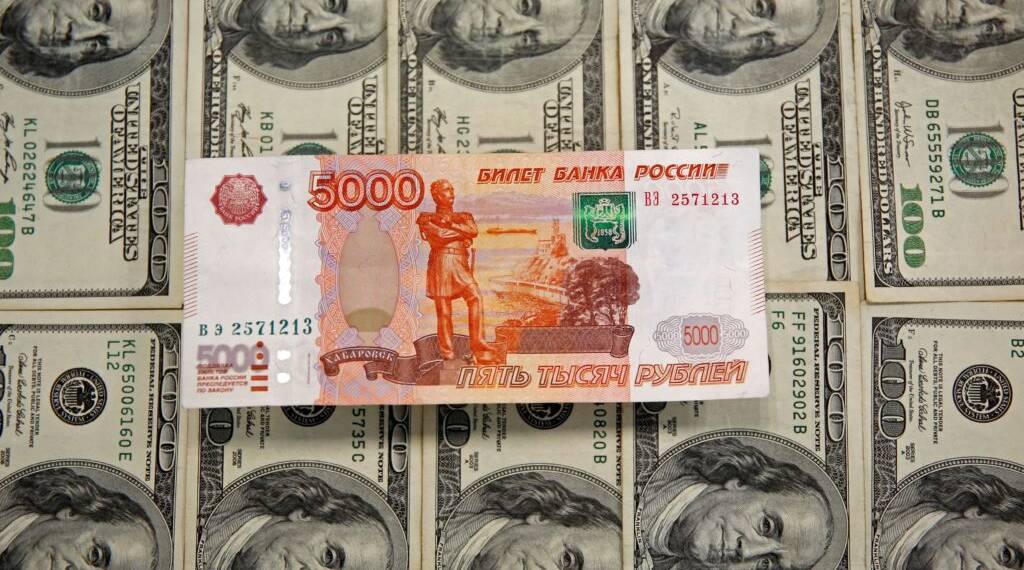Biden, playing the tough card, warned Putin about turning the Russian economy into a backyard bonfire if he dared to mess with Ukraine. Despite Grandpa Joe’s firm wag of the finger, Russian tanks rolled into Ukraine, prompting the U.S. to unleash what might as well be called “Sanctions: The Mega Edition.”
By March 2022, Biden, peering over his aviators, noted the Russian ruble doing its best impression of a cliff dive, optimistically predicting that Russia’s economy would soon be running on fumes, shrinking by half. But lo and behold, forecasts were just that—overly sunny with a chance of miscalculation. The Russian economy merely stumbled a bit, dusted itself off, and by 2023 was strutting around, showing off some growth.
Russia turned into the Houdini of the economic world. Dodging sanctions like a pro, Russia whipped up some clever tricks—parallel import schemes, proxy commercial networks, new paths for energy exports, and a cozy economic cuddle with countries like China and India. This not only cushioned the blow from Western sanctions but also made Russia look like the cool rebel at a college where everyone licks the dean’s arse.
Meanwhile, the U.S. and EU found themselves a step behind, scratching their heads as their economic nets kept missing. And let’s not even start on the drama of thinking about slapping secondary sanctions on big players like China and India—that’s a recipe for an economic and diplomatic migraine.
It’s clear: sanctioning isn’t as straightforward as it seems. It’s more like trying to play cricket with a ball that comes fast, swings midway and takes a sharp turn after hitting the turf!
Now, the Russian Ministry of Economic Development has just dialed up their growth expectations for 2024, much to the surprise (or perhaps dismay) of the economic soothsayers. This year, they’re betting on a GDP expansion of a cool 2.8%, giving the previous forecast of 2.3%, an upgrade.
Here’s the scoop straight from Economy Minister Maksim Reshetnikov: “The Russian economy is like that one guest at the party who not only refuses to leave but also starts DJing—and people are kinda loving it!” Okay, he didn’t exactly say that, but he did tout the economy’s nifty adaptation skills and its “sustainable development” flair despite the global economic headwinds.
Looking ahead to 2025, the ministry is keeping its growth poker face, sticking with a steady estimate of 2.3%. Inflation, however, is expected to play a bit of a rebel, targeting a descent to 5.1%—still overshooting the central bank’s aim of 4%.
Now, for the cherry on top: real disposable incomes and retail trade are looking mighty fine. Incomes are projected to jump by 5.2% (up from the rather modest 2.7% in previous forecasts), and retail sales? They’re anticipated to sizzle at a 7.7% increase in real terms, putting last year’s 6.4% growth to shame.
But wait, there’s more! Last week, the IMF strutted in with its own predictions, giving the Russian economy a hefty pat on the back with a growth forecast of 3.2% for 2024—a sharp uptick from earlier gloomier estimates. And for those keeping score, this means Russia is expected to outpace several major Western economies this year. In the economic Olympics, it seems Russia is sprinting ahead while others are still tying their shoelaces.
Who knew sanctions were about as effective as Justin Trudeau at a Manliness contest? Russia’s economy is strutting its stuff, shrugging off sanctions like they’re last season’s fashion faux pas. This awkward revelation has everyone rethinking U.S. foreign policy—like, maybe it’s time to switch up the playlist since we’ve been blasting the same Cold War tracks on repeat.
And now, with whispers turning into shouts, there’s talk of ditching sanctions altogether. “No Sanctions” might just be the bold new tagline for U.S. policy, not just under the next President Trump but for any sequels to his presidency. Time to adapt or be left behind, folks—because it seems the world’s changing faster than we can keep up!








